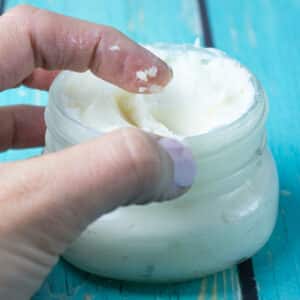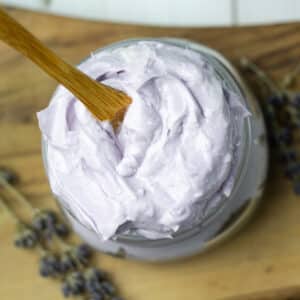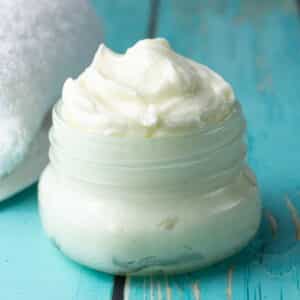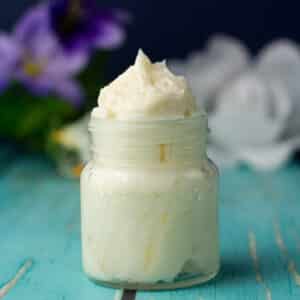Natural butters used in skincare formulations aren't all created equal. Today we're going to discuss the most commonly used butters, their properties, melting point and uses. And, if you've been using the same old butter over and over again, you might discover something new today.

What kind of butter are we talking about here?
No, not the kind you spread on your dinner rolls. But plant-derived butters that are used in skincare products. These natural butters are fats that can be found in nuts or seeds of a plant.
What makes the fats solid butter instead of liquid oils is the fact that they contain higher amounts of saturated fats (solid fats). Most plant-based butters are comprised of fatty acids, like stearic acid and lauric acid.
Shea Butter
Shea butter is by far the most widely-known and used butter closely followed by cocoa butter, of course. It's soft, rich, nourishing, and extremely versatile. The only drawback is that it's quite greasy.
- Origin: Africa, extracted from the kernels of the karite tree
- Properties: moisturizing and conditioning for skin and hair, anti-inflammatory properties (great for eczema), offers slight sun protection, contains omega-6 essential fatty acids as well as Vitamin A and E
- Hardness: soft
- Absorption speed: slow
- Skin feel: greasy
- Melting point: 90 ℉ / 32 ℃
- Uses: whipped body butter, cold process soap (up to 25% of oils), lotions, lip balms, hair masks
- Shelf life: kept cool and dry, about 1-2 years
- Shea butter is an ingredient I always have on hand. I mainly use it in body butters for my eczema-ridden family and cold process soap. For soap I tend to use unrefined shea butter, but for everything else the refined version. Unrefined shea butter has a very distinct smell, somewhat smoky, that I don't care for. I've never noticed the smell come through in soap though.
- Drawbacks: Shea butter has a greasy skin feel and absorbs slowly. It can also turn grainy on you at times when stored in fluctuating temperatures. To solve these issues, read my posts How to make body butter less greasy and How to fix grainy shea butter
Mango Butter
Mango butter is simply delightful. Soft, creamy, but a lot lighter than shea butter and ultra-fast absorbing. It will add a luxurious satin feel to your formulations, you have to give it a try!
- Origin: pressed from the seed of the mango fruit
- Properties: moisturizing, conditioning, emollient
- Hardness: soft
- Absorption speed: fast
- Skin feel: silky
- Melting point: 95°F / 35°C
- Scent: odorless
- Uses: body butter, soaps, lotions, hair care
- Mango butter is my absolute favorite butter to use in body butters that are lightweight and fast absorbing. My mango body butter is absolutely divine! It also adds creaminess and nourishing fatty acids to cold process soap. Try to swap it out in your formulations anywhere you use shea butter and want a lighter product.
Cocoa Butter
Also a very well know butter which is not only used for skin care, but also widely used in food production. It's a very hard butter with a very distinct chocolatey smell (if unrefined).
- Origin: fat extracted from cocoa beans
- Properties: moisturizing, emollient, improves skin elasticity
- Hardness: brittle
- Absorption speed: fast
- Skin feel: rich
- Melting point: 34–38 °C (93–100 °F)
- Scent: chocolatey, but not overly sweet (if it's unrefined)
- Uses: body butters, creams, balms, lip balms, soap
Unlike the first two butters, cocoa butter is a hard butter that can add structure to your formulation without using a wax. The natural chocolate scent is something many DIYers love. It really smells so good and can be combined with coffee or vanilla scents. In cold process soap it adds hardness and moisturizing properties, the chocolate scent will come through.






Leave a Reply